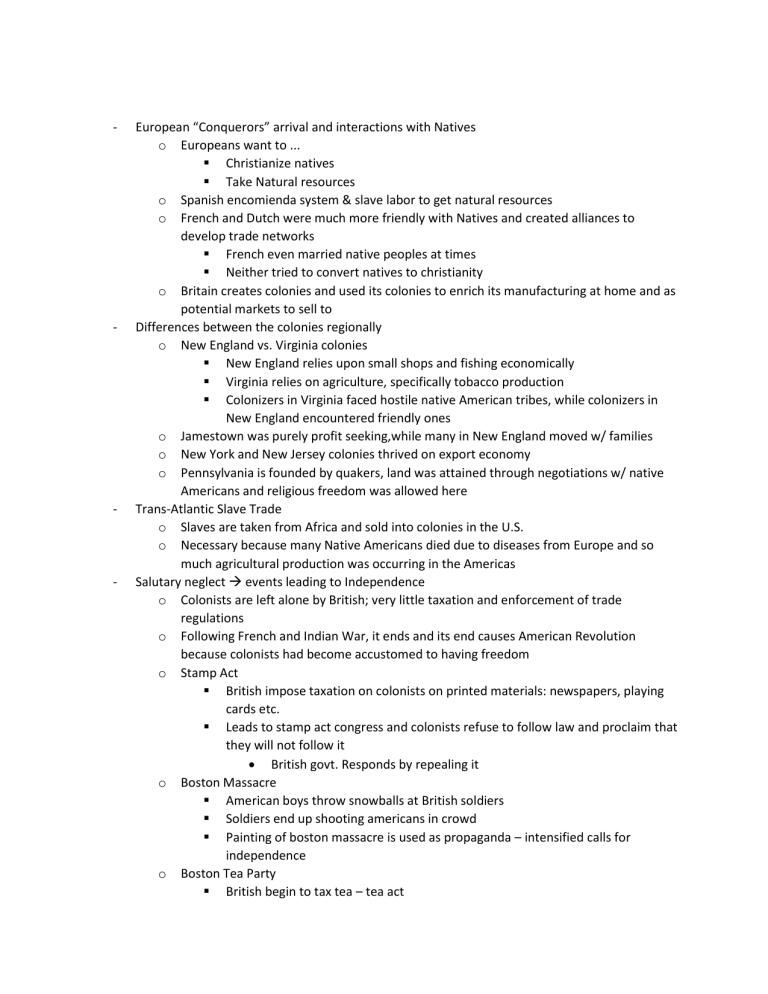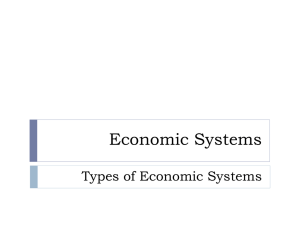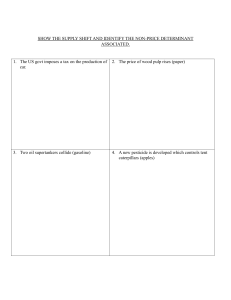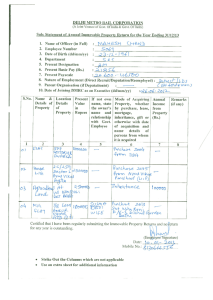
- - - - European “Conquerors” arrival and interactions with Natives o Europeans want to ... Christianize natives Take Natural resources o Spanish encomienda system & slave labor to get natural resources o French and Dutch were much more friendly with Natives and created alliances to develop trade networks French even married native peoples at times Neither tried to convert natives to christianity o Britain creates colonies and used its colonies to enrich its manufacturing at home and as potential markets to sell to Differences between the colonies regionally o New England vs. Virginia colonies New England relies upon small shops and fishing economically Virginia relies on agriculture, specifically tobacco production Colonizers in Virginia faced hostile native American tribes, while colonizers in New England encountered friendly ones o Jamestown was purely profit seeking,while many in New England moved w/ families o New York and New Jersey colonies thrived on export economy o Pennsylvania is founded by quakers, land was attained through negotiations w/ native Americans and religious freedom was allowed here Trans-Atlantic Slave Trade o Slaves are taken from Africa and sold into colonies in the U.S. o Necessary because many Native Americans died due to diseases from Europe and so much agricultural production was occurring in the Americas Salutary neglect events leading to Independence o Colonists are left alone by British; very little taxation and enforcement of trade regulations o Following French and Indian War, it ends and its end causes American Revolution because colonists had become accustomed to having freedom o Stamp Act British impose taxation on colonists on printed materials: newspapers, playing cards etc. Leads to stamp act congress and colonists refuse to follow law and proclaim that they will not follow it British govt. Responds by repealing it o Boston Massacre American boys throw snowballs at British soldiers Soldiers end up shooting americans in crowd Painting of boston massacre is used as propaganda – intensified calls for independence o Boston Tea Party British begin to tax tea – tea act - - - - In response, Sons of Liberty disguise themselves as native americans and dump british tea into harbor in protest In response, Britain passes coercive/intolerable acts o Common Sense Written by Thomas Paine, was written in a language that the common man could read with only references to bible Called for complete independence from Britain and sparked revolution Articles of Confederation Constitution Ratification o Federalists v. Anti-Federalists Bill of Rights Federalist v. Anti-Federalists Federalist= more power in hands of federal govt Anti federalists= more power to states Federalists wanted to ratify constitution They come to compromise with bill of rights included in constitution o Articles of Confederation – failures Weak central government, too strong of state govts. National govt. Had virtually no power- couldn't impose taxes or regulate trade Inability to enforce treaties Militarily weak national govt. - shays rebeliion No national currency Shay’s Rebellion Massachussetts farmers and in debt to their creditors and have no way of paying; believe that the state government should side with them and help them, govt. Instead sides with creditors Army of men, led by Daniel Shay, form blockades around courthouses and stop judging from issuing foreclosure orders that would take their land away Massachusetts state govt. Crushes the rebellion Exposes weakness of articles of confederation – no federal govt to call o Ratification of Constitution Federalists agree to add bill of rights a soon as it is passed in exchange for antifederalist support of the bill Republican Motherhood o Women could best influence political realities by raising virtuous sons in the home o Emphasized women’s role as mother and homemaker Jefferson – election of 1800 o Louisiana Purchase – believed that it was unconstitutional but still did it because he believed it was good for the country Jacksonian Democracy o Populist o Campaigns all over country immediately after being “cheated” out of presidency by Adams and Henry Clay o Eventually becomes president in 1828 o Jackson vetoed renewing of national bank - - - - - - o Indian Removal Debate/argument over slavery o Starts with arguments over whether new states should prohibit or allow slavery; main issue is maintaining balance in senate between free and slave states o Southern social structure before Civil War The American System o Created by Henry Clay Federally funded internal improvements Implementation of protective tariffs to protect U.S. manufacturers 2nd bank of U.S. o Madison vetoed first thing but other two passed Market Revolution – causes/effects o Linking of Northern industries w/ western and southern farms through advances in industry and technology New technology like cotton gin and spinning machine speed up industrial processes Division of labor into small, repeatable tasks Advances in transportation through canals Eventually railroads replace canals Second Great Awakening o People organized to listen to preachers and religious figures for hours at a time o In general, most meetings were egalitarian (included whites, blacks, slaves, men, women, etc) o Movement spreads to cities through preacher Charles Finney People flocked to hear him speak o Finney and other preaches emphasize moral reformation of society Abolition, temperance, etc. 1st great awakening was about personal moral reformation, in contrast Transcendentalists o Emphasis on nature and its power Art as well o Many of these people also supported social movements like abolition Western Expansion/Mexican War o Manifest Destiny makes Americans believe that it is our God given right and destiny to expand o History of Texas Most of Texas was actually Americans who were protestant slave owners Mexico was upset with this and as a result mandated that all people in Texas get rid of slaves and convert to Catholicism Americans refuse, Mexican govt shuts down border to American immigration in response Americans simply don’t comply and keep coming in, owning slaves, practicing protestantism o - - - - Mexican War Texas is annexed into Union by James Polk Americans believe that southern border of Texas is Rio Grande but Mexico says it is Nuaces river Small bands of American troops gain enough ground against Mexicans and win Treaty of Guadalupe is signed which establishes Rio Grande as border and gives U.S. land that is California, New Mexico, Utah etc Reconstruction successes/failures (Jim Crow) – Amendments o 13th, 14th, 15th amendment 13th: Abolition of slavery 14th: Equal Rights 15th: Voting Rights o Reconstruction Presidential Reconstruction v. Radical Reconstruction Radical reconstruction wanted to take a much more aggressive approach and punish all people from the south and make blacks completely equal Presidential reconstruction was the route that Johnson took, which enfranchised the south and allowed states to join the union with very little changes to what they were doing Black Codes, Sharecropping Black codes restricted the rights of blacks in the south by enstating land restrictions, restrictions on civil rights and curfews Sharecropping was not much different from slavery; blacks worked for a share of their crop but were paid very little 40 acres and a mule Former slaves believed that they would receive this in the south following the war from the land formerly owned by confederates Didn’t end up happening because Andrew Johnson gave land back to confederates Jim Crow laws oppressed African Americans US government & Plains Indians conflict as Western settlement increases o Western expansion through railroads Creates new conflicts w/ Native peoples living there o Sioux Wars o Americans make treaties w/ tribes and then break them repetitively o Ghost Dance Movement Robber Barons v. Captains of Industry o Idea that wealthy capitalists like Carnegie, Vanderbilt, Rockefeller could be considered good or bad o Abuses of workers vs. Increased economic production Different waves of immigration – reactions to immigration o People become frustrated with new immigration from southern and eastern Europe o Many believe that immigrants are taking their jobs - - - - - - o Unions opposed immigrants because they believed that they worked for too cheap o Irish immigrants receive hatred as well Riis, How the Other Half Lives o Books like these expose the brutality of new industrialization o How the other half lives, written by Jacob Riis, exposes what it is like for lower class to live in city, leads to urban reform Populist Party – platform o Coinage of silver o Direct election of senators o Graduated Income Tax o 8 hour work day for laborers Spanish American War and changes in American Foreign Policy o America begins to practice an imperialist foreign policy In order to gain access to new markets to sell goods o Idea that we need a strong navy – big stick policy o Spanish American War America intervenes against Spanish in Cuba Yellow journalists USS Maine explosion America wins war within a few short months o U.S. annexes Philippines Progressive movement – goals and achievements o Concerned about rising power of big business Rights of women Civil rights Workers rights o Govt intervention needed to control the problems of the gilded age o Secret Ballot voting o Direct election of senators through 17th amendment TR as President o Foreign Policy Big stick diplomacy Imperialism Construction of Panama Canal Corollary to Monroe Doctrine U.S. has right to intervene in western hemisphere against European powers o Trust buster – enforced SATA o Pure food and drug act o Conservation laws to protect natural land Wilsonian Progressivism o Took up fight against triple wall of privledge Tariffs, banks, trusts o Federal Reserve Act – National Banking System - - - - - o Broke up trusts – Clayton ATA strengthens and clarifies SATA Shchenk v. US – Espionage & Sedition Acts o 1920s immigration/Red Scare o New immigration from Eastern Europe stirs up fears of communists coming to take control of U.S. Achievements of the New Deal o AAA: Pays farmers to farm less to try to bring prices back up o Home Owners Loan Corporation, which purchased the mortgages of distressed home owners, provided money for taxes and repairs, and set repayment schedules over 30year terms at 5 percent interest. The loan corporation assumed one-sixth of all home mortgages in the United States, and soon made home ownership a goal to which most Americans could aspire. o Roosevelt asked Congress for $500 million for unemployment relief. Congress complied and the president appointed Harry Hopkins to administer the program, the first ever by the federal government. o Civilian Conservation Corps (CCC): Puts men to work to reclaim country's natural resources – men lived in govt camps and were giving food and clothing; they had to send 80% of money they made back to their families o Tennessee Valley Authority, providing cheap electric power to one of the most poverty stricken regions of the country o Truth in Securities Act regulated Wall Street o Glass-Steagall Act: required banks to divest themselves of securities operations; gave the Federal Reserve Board the authority to set interest rates; and established the Federal Deposit Insurance Corporation to guarantee individual bank deposits, assuring the average citizen that his money would be protected by the government. o National Industrial Recovery Act: authorized business to establish production codes controlling prices and output, guaranteed labor’s right to bargain collectively, and stipulated that industry codes should set minimum wages and maximum hours. It also provided $3.3 billion for public works (roughly $50 billion currently) as a fiscal stimulant. o Under NRA, if you met your industry code, you could put a blue eagle on the label; customers wanted to buy things from countries with fair economic standards Post-WWII Conformity of the 1950s o Suburbs McCarthyism o Joseph McCarthy’s pushing of the idea that there were communists and communists sympathizers in the U.S. government Containment applied in American Foreign Policy o Berlin Airlift o Truman Doctrine o Marshall Plan o Intervention in Korea Marshall Plan o o - - Provides billions in aid to Europe post WWII Wanted to make sure that conditions under which communist ideology could spread (poverty) didn’t happen MLK nonviolent direct action (compared to Malcolm X) Rachael Carson, Silent Spring – environmentalist movement Vietnam causes, escalation – Gulf of Tonkin & Tet Offensive o Gulf of Tonkin Incident The USS Maddox reported fire coming from North Vietnamese ships in the Gulf of Tonkin; Johnson admin exploits as a pretext for war The complete events of the day are very unclear Congress passes Gulf of Tonkin Resolution that gave Johnson authority to deploy troops in Vietnam Represents a large change because it marks the point at which direct U.S. involvement in the war occurs Pretty much gives Johnson ability to do whatever he wants to combat communist aggression o Tet Offensive Vietcong communist guerillas storm American Embassy in Saigon Exposed lies of the Johnson administration Demonstrated that contrary to what the Johnson admin was saying, that the enemy was depleted and could not strike anywhere in the country, was not true and that North Vietnamese forces could actually strike at will anywhere in the country Rise of Conservatism post-1968 o Religious Right/Moral Majority 2nd Women’s Movement Equal Rights Amendment (vs. Phyllis Schlafly)





